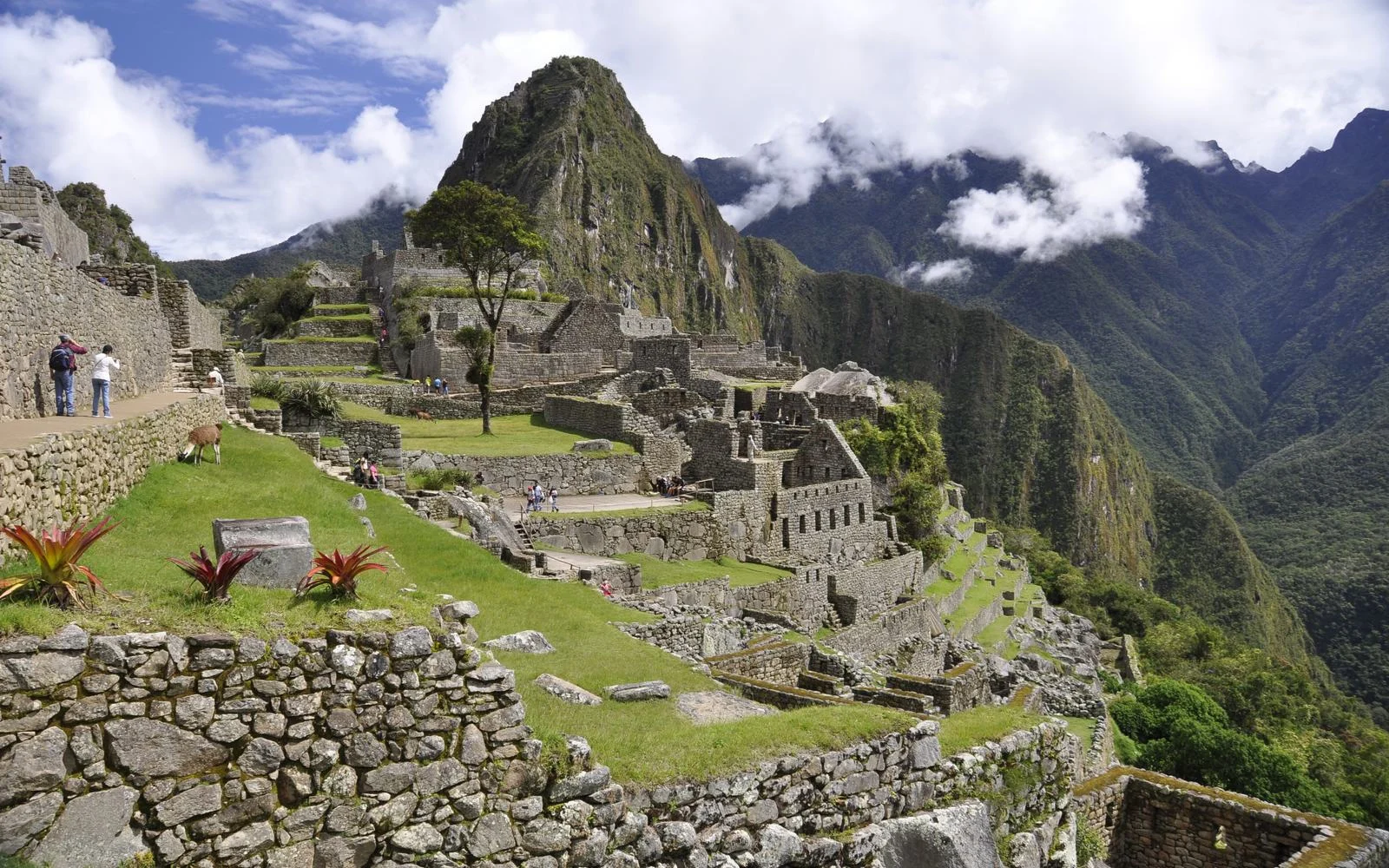What's the best time to visit Peru?
May to August is the best period to visit Peru, offering cool, dry weather ideal for Andean treks and Machu Picchu visits due to accessible trails and minimal rain. It’s also favorable for Amazon explorations, with less rain and cooler temperatures. This time coincides with Peru’s festival season, featuring vibrant celebrations such as the Inti Raymi sun festival and Corpus Christi.
Peru is a wonderful country to discover, whether it’s your first time in South America or you’re returning to the continent for a repeat visit. The country is rich with history, from ancient Incan cities such as Machu Picchu to well-preserved colonial cities such as Cusco.
The spectacular Andean landscape and high mountains are a dream for hikers and trekkers from all over the world. Lima, the capital, is a lively city home to one of the world’s best gastronomical scenes.
Visiting Peru is all about getting the timing right, since some remote locations are not accessible all year round. We’ll show you the best time to visit along with the least busy, cheapest, and worst times to go; let us be your guide!
Overall Best Time to Visit Peru
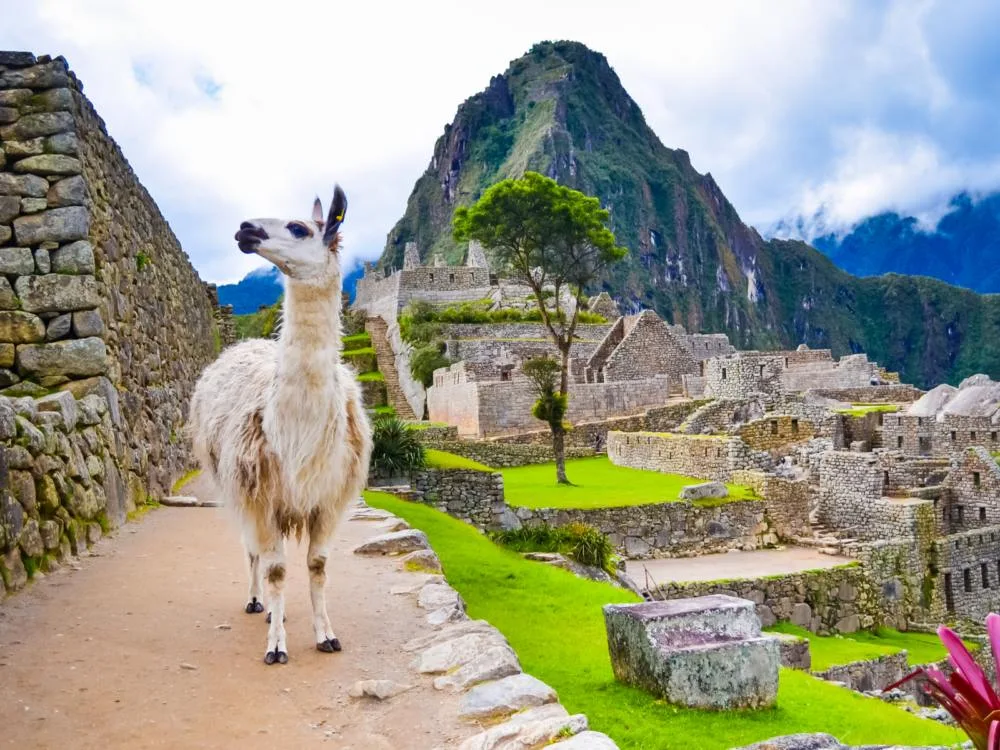
Northstars/Shutterstock
The best time to visit Peru is during its winter (May-August), when weather is cool but dry, and more remote Andes locations are accessible to visitors.
Peru is a massive country with diverse climate zones. The coast has a semi-arid subtropical climate, while the highlands have a more alpine climate. The Amazonian region and lowlands have a tropical rainforest climate.
All three climatic zones share some similar weather patterns. Since all of Peru is located below the equator, in the Southern Hemisphere, the seasons are opposite what you would find up north — with cooler temperatures from May to August.
July in Lima has average temperatures of about 60 degrees Fahrenheit, the coldest it gets all year round. Winter coincides with the dry season throughout most of the country.
June, July, and August have the least rain compared to the entire rest of the year. This is the best weather for trekking in the Andes and visiting remote mountain locations such as Machu Picchu. Obviously, it’s much more pleasant to hike in the sun than in the rain, but a bigger reason is trail accessibility.
During the dry season, the trails are in pristine condition, while during the rainy season they can get muddy. While Machu Picchu is open all year round, more remote archeological locations sometimes close down during the off-season.
The dry season is also the best time to visit some other regions of Peru. The Amazon rainforest and lowlands have a tropical climate, meaning the weather is consistently warm and rainy all year round, but the rains let up somewhat from May to August.
This is a great time to go exploring the jungle or take a boat trip down the Amazon. Temperatures are a bit cooler, so it’s more pleasant to explore areas such as Tambopata National Park. May-August also coincides with the festival season in Peru.
You’ll get to experience the unique blend of indigenous religions and Catholicism that many Peruvians practice at traditional festivals such as:
- Corpus Christi, a Catholic festival with spectacular parades, especially in Cusco (May/June)
- Qoyllurit’i, a UNESCO-protected syncretic religious parade (May/June)
- Inti Raymi, a traditional Incan sun festival (June 24th)
- Virgen del Carmen, a massive Catholic pageant with parades (July)
when weather is cool but dry, and more remote Andes locations are accessible to visitors.
Peru is a massive country with diverse climate zones. The coast has a semi-arid subtropical climate, while the highlands have a more alpine climate. The Amazonian region and lowlands have a tropical rainforest climate.
All three climatic zones share some similar weather patterns. Since all of Peru is located below the equator, in the Southern Hemisphere, the seasons are opposite what you would find up north — with cooler temperatures from May to August.
July in Lima has average temperatures of about 60 degrees Fahrenheit, the coldest it gets all year round. Winter coincides with the dry season throughout most of the country.
June, July, and August have the least rain compared to the entire rest of the year. This is the best weather for trekking in the Andes and visiting remote mountain locations such as Machu Picchu. Obviously, it’s much more pleasant to hike in the sun than in the rain, but a bigger reason is trail accessibility.
During the dry season, the trails are in pristine condition, while during the rainy season they can get muddy. While Machu Picchu is open all year round, more remote archeological locations sometimes close down during the off-season.
The dry season is also the best time to visit some other regions of Peru. The Amazon rainforest and lowlands have a tropical climate, meaning the weather is consistently warm and rainy all year round, but the rains let up somewhat from May to August.
This is a great time to go exploring the jungle or take a boat trip down the Amazon. Temperatures are a bit cooler, so it’s more pleasant to explore areas such as Tambopata National Park. May-August also coincides with the festival season in Peru.
You’ll get to experience the unique blend of indigenous religions and Catholicism that many Peruvians practice at traditional festivals such as:
- Corpus Christi, a Catholic festival with spectacular parades, especially in Cusco (May/June)
- Qoyllurit’i, a UNESCO-protected syncretic religious parade (May/June)
- Inti Raymi, a traditional Incan sun festival (June 24th)
- Virgen del Carmen, a massive Catholic pageant with parades (July)
Cheapest Time to Visit Peru
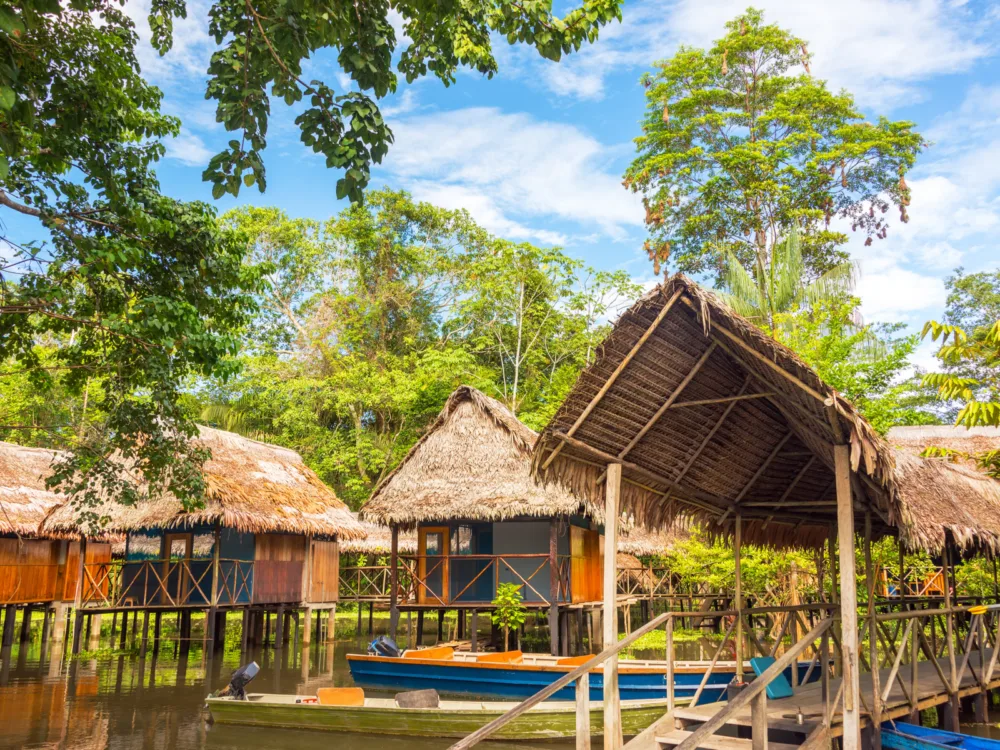
Jess Kraft/Shutterstock
The cheapest time to visit most of Peru is during the rainy season, from November to March, but it varies depending on the region.
November to March is the rainy season in most of the country, including the popular Andes highlands and the tropical regions. The worse weather means hotels have less business, and you can save money on accommodation.
For example, hotels in Cusco in November offer discounts of 20-40% once the high season for visits to Machu Picchu is over.
However, the least expensive time to visit Lima and the coast is a bit different. Many people flock to the beach during Peru’s summer (December-February), so visit this region after summer is over, in March-April.
In April, you can find 20-30% discounts on hotels in Lima. You can find inexpensive flights to Peru during much of the year, outside of the high tourist season which lasts from May to August.
January and February usually have the lowest prices for flights since fewer people worldwide are traveling after New Year’s, but you can also find discounts during the shoulder season.
Just be sure to avoid traveling during major holiday periods, such as Easter or Christmas, when many international visitors and locals go on vacation. Prices in popular vacation destinations tend to rise.
Least Busy Time to Visit Peru
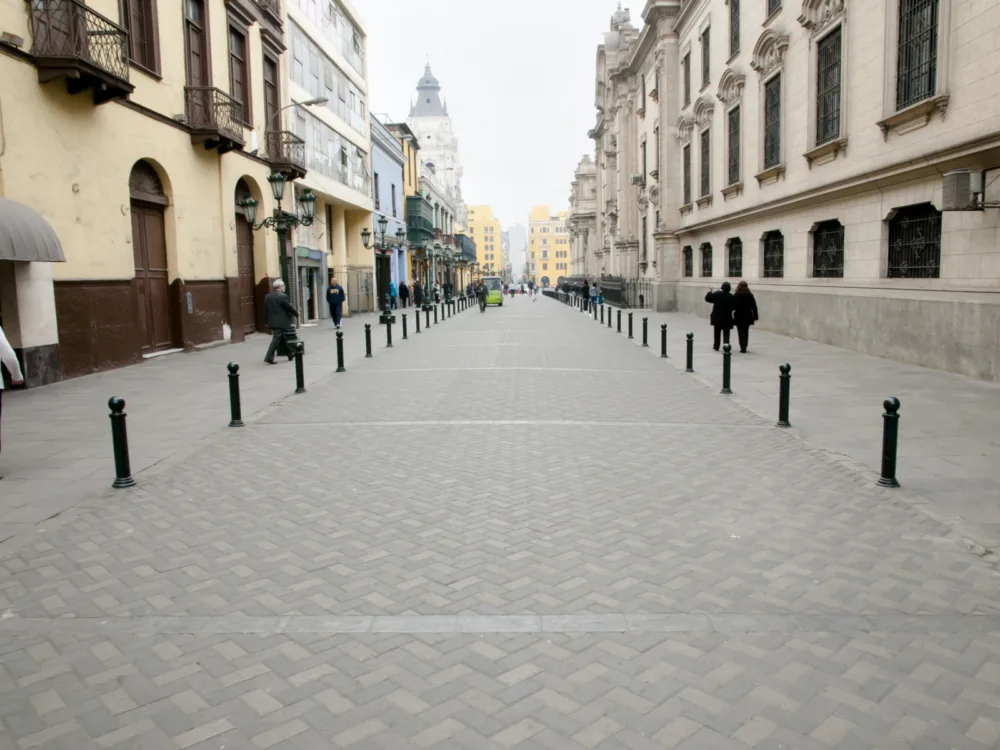
Adwo/Shutterstock
The least busy times to visit Peru are during the shoulder seasons of April-May and September-October. Visiting during the shoulder seasons allows you to beat the crowds but still catch some of the good weather.
During the high season, popular Andean sites such as Machu Picchu become extremely crowded. Visiting a few months earlier or later means that the majesty of the site is increased by the relative lack of crowds.
Lima is at its best in April and May. The crowds haven’t quite come in yet, which means that it’s easier to get reservations for its top restaurants.
It’s still best to book early, as some require reservations months in advance. The fog of the rainy season (and the pollution) is a lot more manageable as well. March-May is one of the best seasons for festivals, traditional Incan and Catholic.
These festivals tend to have fewer international visitors than the high-season ones, making them feel more local. Some of the best include:
- Easter/Semana Santa (varies each year)
- El Señor de Muruhuay (May)
- Fiesta de las Cruces (May 3rd)
September-October is one of the better times to visit the coastal region. The crowds aren’t here yet, but the weather is just starting to warm up before summer.
It’s a good time to stroll along the boardwalk and try out sports such as hang-gliding. It’s also a good time to visit tropical destinations including Iquitos before the worst of the rains set in.
Worst Time to Visit Peru
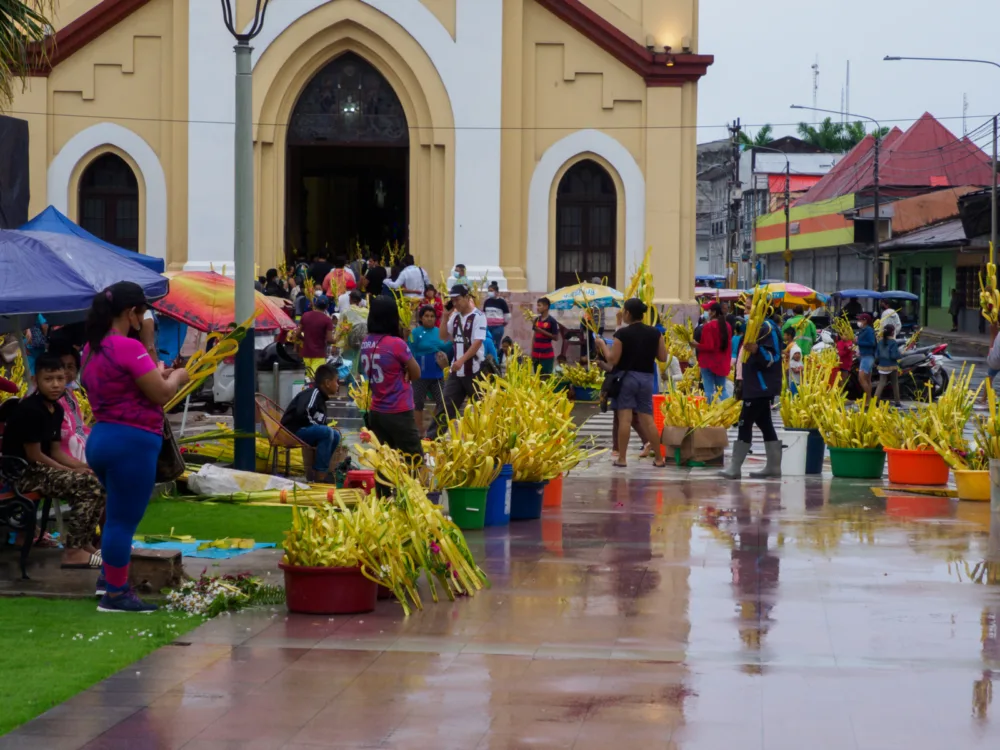
Nowaczyk/Shutterstock
The worst time to visit Peru is during the peak of the rainy season, from December to February. Most of Peru, including the Andes highlands and the Amazon rainforest, have their rainy season from December to February.
According to World Bank data, the average annual rainfall during these three months is 544.21 millimeters (21.4 inches). The wet conditions make it pretty unpleasant to explore and add extra gear to your packing list.
It may even be impossible to go on some of the treks that you had planned. The iconic Inca Trail closes completely during the month of February, which is the rainiest month, to prevent accidents due to the constant storms. However, some other Andean trails stay open.
If you don’t mind rainy hiking, this is a good time to go if you really don’t want to see anyone else on the trail. This is also a good time to visit the coastal region of Peru, including Lima.
This region has opposite seasons compared to the rest of the country, and December-February is actually the driest time. The mist in Lima lifts, and the weather feels bright for once. This is a great time to go to the beach and explore Peru’s lengthy coastline.
The weather is warm and sunny (although some days can get quite hot). It’s great weather for swimming and surfing. Just be prepared for extra crowds as many Peruvian families come to the beach during this time.
Peru by Month: Climate & Activities
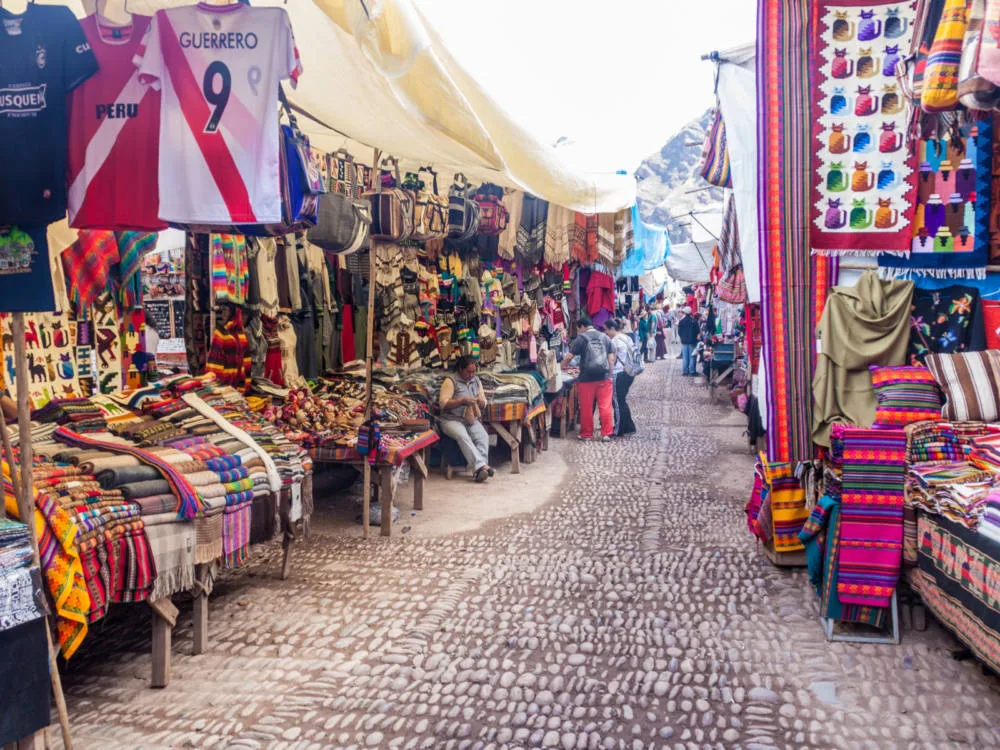
Matyas Rehak/Shutterstock
Still unsure about the best time to visit Peru? Take a look at our summary of the weather and climate by month below:
January
January brings warm summer temperatures to Peru, especially on the coast. Lima experiences temperatures around 18-28°C (64-82°F). This month is great for beach activities in Northern Peru, exploring the vibrant city of Lima, and enjoying the colorful Fiesta de la Marinera in Trujillo.
February
February continues with warm temperatures and is the wettest month in the Andes. It’s ideal for surfing in Máncora, attending the Carnival celebrations across the country, and exploring the Amazon Rainforest, which is lush and vibrant during this time.
March
As the rainy season starts to wane in the Andes, temperatures in coastal areas like Lima range from 18-27°C (64-80°F). March is perfect for grape harvesting festivals in Ica, visiting the Ballestas Islands, and exploring the Nazca Lines.
April
April marks the end of the rainy season in the Andes, with Cusco temperatures around 7-21°C (45-70°F). It’s a good time to hike the Inca Trail to Machu Picchu, explore the Sacred Valley, and visit Lake Titicaca, the highest navigable lake in the world.
May
In May, Peru sees drier weather in the Andes, ideal for visiting Machu Picchu and Cusco, with temperatures around 4-20°C (39-68°F). In the Amazon, the lower water levels make it a great month for jungle treks and wildlife spotting.
June
June brings cool, dry weather to the Andes, perfect for outdoor adventures. The Inti Raymi Festival in Cusco is a highlight, along with ideal conditions for visiting Machu Picchu. The Amazon is also great for wildlife viewing.
July
July is peak tourist season in the Andes due to dry, sunny weather. Cusco and Machu Picchu are busy but offer excellent hiking conditions. The coast, like Lima, is cooler and often overcast, with temperatures around 15-20°C (59-68°F).
August
In August, Peru’s dry seasons continues in the Andes. It’s ideal for trekking in regions like Huaraz and visiting the Colca Canyon. In Lima and other coastal areas, expect cool, misty weather.
September
September marks the start of the spring season. The Andes remain dry, good for visiting Machu Picchu, while the Amazon region starts getting more rain, enhancing the rainforest’s lushness.
October
In October, the Andes start getting occasional rain, but it’s still a good time to visit Machu Picchu. The coastal region begins warming up, with Lima experiencing temperatures around 15-21°C (59-70°F).
November
In November, Peru sees the start of the rainy season in the Andes, but early in the month is still favorable for visiting Cusco and Machu Picchu. The coast, including Lima, gets warmer and sunnier, perfect for city tours and beach activities.
December
December brings summer to Peru’s coastal areas, with warm, sunny weather perfect for beaches. Lima sees temperatures around 18-26°C (64-79°F). The Andes are wetter, but early December can still be a good time for Machu Picchu visits.
Frequently Asked Questions
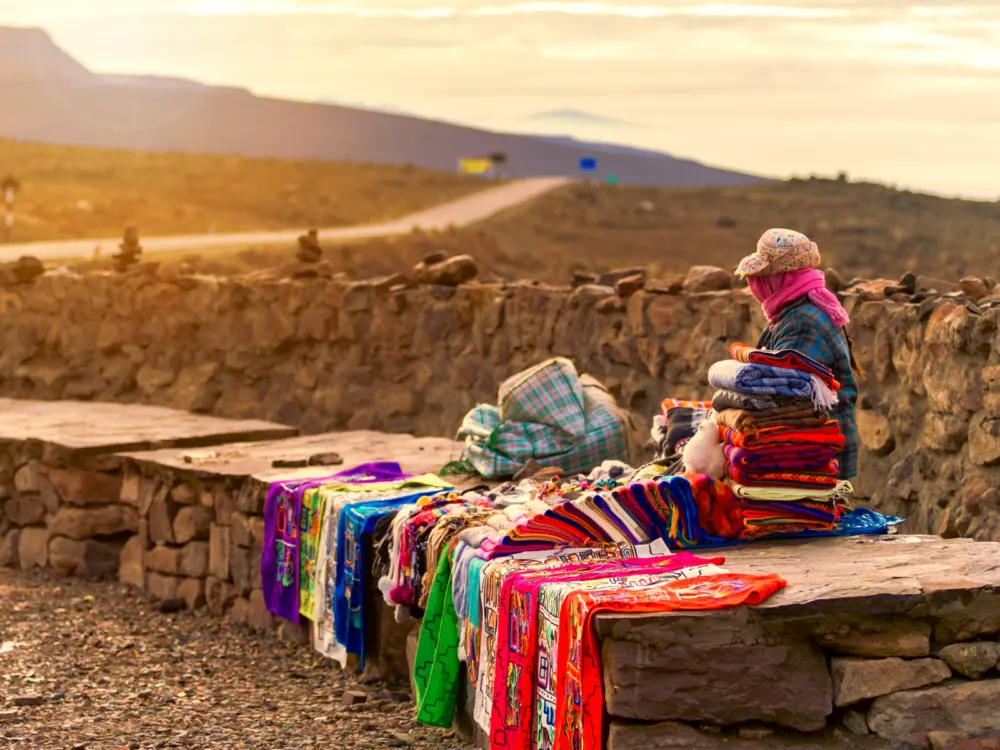
Simon Mayer/Shutterstock
To help you pick the best time to visit Peru, check out these questions:
What is the best month to travel to Peru?
The best month to travel to Peru is May, when you have the highest chance of getting good weather in all three major regions.
What are the best months to go to Machu Picchu?
The best months to go to Machu Picchu are April-May or September-October, which have dry-season weather but fewer crowds.
What are the rainy months in Peru?
The rainy months in Peru are December to March in the Andes and Amazon, but July to September along the coast.
Where is the best weather in Peru?
If you want cool, mild temperatures, head to the Andes in the winter, but if you prefer hot temperatures, visit the coast in the summer.
Is it inexpensive to go to Peru?
It is possible to visit Peru with a small budget. Just prepare for activities that may cost more, such as visiting Machu Picchu.
So, What’s the Best Time to Visit Peru?
The best time to visit most of Peru’s popular sites, including Machu Picchu, is during the winter dry season from May to August. During the rainy season, accommodations are discounted but the weather is difficult, except for Lima and the coast, which has the best weather from December to February.
So, with so much to see and do and plenty of amazing times to visit, what are you waiting for — book your trip today and experience for yourself all that Peru has to offer. Happy travels!



